Archives
- 2025-12
- 2025-11
- 2025-10
- 2025-09
- 2025-03
- 2025-02
- 2025-01
- 2024-12
- 2024-11
- 2024-10
- 2024-09
- 2024-08
- 2024-07
- 2024-06
- 2024-05
- 2024-04
- 2024-03
- 2024-02
- 2024-01
- 2023-12
- 2023-11
- 2023-10
- 2023-09
- 2023-08
- 2023-07
- 2023-06
- 2023-05
- 2023-04
- 2023-03
- 2023-02
- 2023-01
- 2022-12
- 2022-11
- 2022-10
- 2022-09
- 2022-08
- 2022-07
- 2022-06
- 2022-05
- 2022-04
- 2022-03
- 2022-02
- 2022-01
- 2021-12
- 2021-11
- 2021-10
- 2021-09
- 2021-08
- 2021-07
- 2021-06
- 2021-05
- 2021-04
- 2021-03
- 2021-02
- 2021-01
- 2020-12
- 2020-11
- 2020-10
- 2020-09
- 2020-08
- 2020-07
- 2020-06
- 2020-05
- 2020-04
- 2020-03
- 2020-02
- 2020-01
- 2019-12
- 2019-11
- 2019-10
- 2019-09
- 2019-08
- 2019-07
- 2018-07
-
br Introduction Over the past two decades the prevalence of
2021-10-20
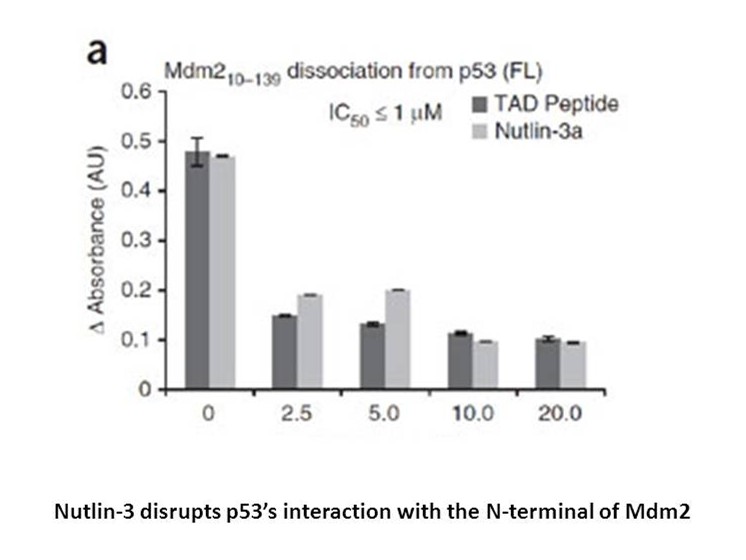
Introduction Over the past two decades, the prevalence of obesity and obesity-associated metabolic diseases, such as T2D, insulin resistance, atherosclerosis and stroke, have been dramatically increased globally [1], [2], and obesity has been suggested to be the leading cause of the reduced life
-
Another small compound targeting IBAT has been
2021-10-20
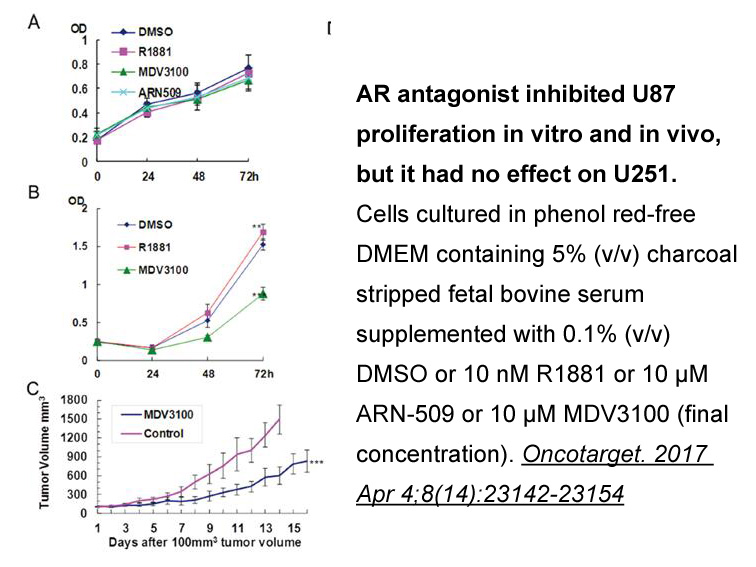
Another small compound targeting IBAT has been evaluated in Phase I clinical trial (EudraCT 2013-001175-21) [86]. The oral administration of A4250 to healthy subjects did not give rise to any serious adverse events, was well tolerated and had a similar safety profile as elobixibat; however, it cause
-
The Hippo pathway has been well established as
2021-10-20
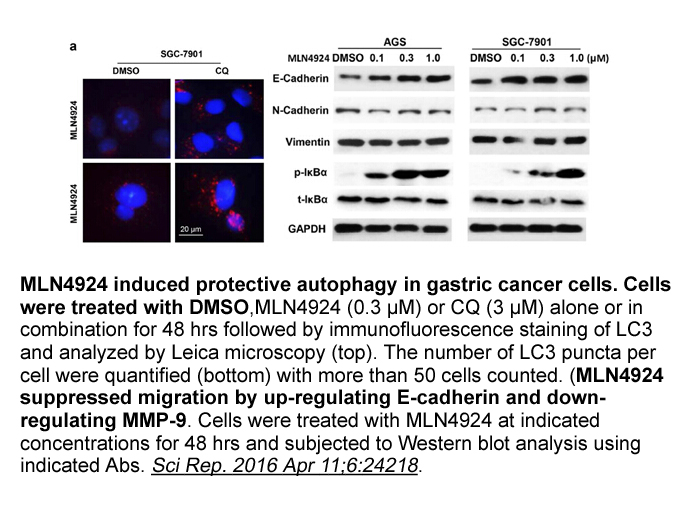
The Hippo pathway has been well established as a tumor suppressor pathway and is involved in many diverse biologic processes including cell growth, cell death, and organ size control in organisms, ranging from Drosophila to mammals [4]. Central to this pathway is a kinase cascade in which the Ste20-
-
Consistent with our gene profiling analyses showing that gen
2021-10-20

Consistent with our gene-profiling analyses showing that genes involved in mutual compensation of EGFR or integrin/FAK were significantly downregulated by Tinagl1 overexpression, treatment with r-Tinagl1 inhibited the activation of EGFR and FAK in vitro, and phenocopied the combined inhibition of in
-
When studying the potential of HATi for the treatment of
2021-10-20
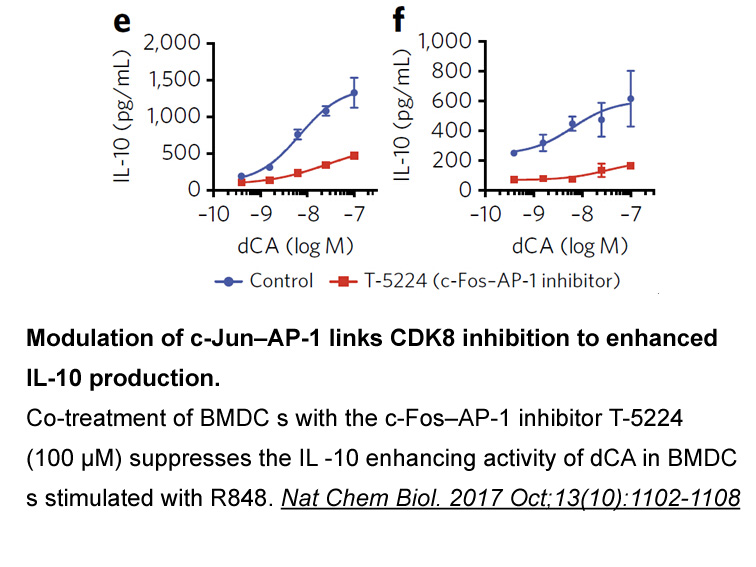
When studying the potential of HATi for the treatment of inflammatory lung diseases, investigating lung tissue specific effects may be particularly relevant since local administration of small molecule inhibitors in lung tissue is possible and is already applied for inhaled glucocorticoids in the tr
-
br H R agonists In search for potent
2021-10-20
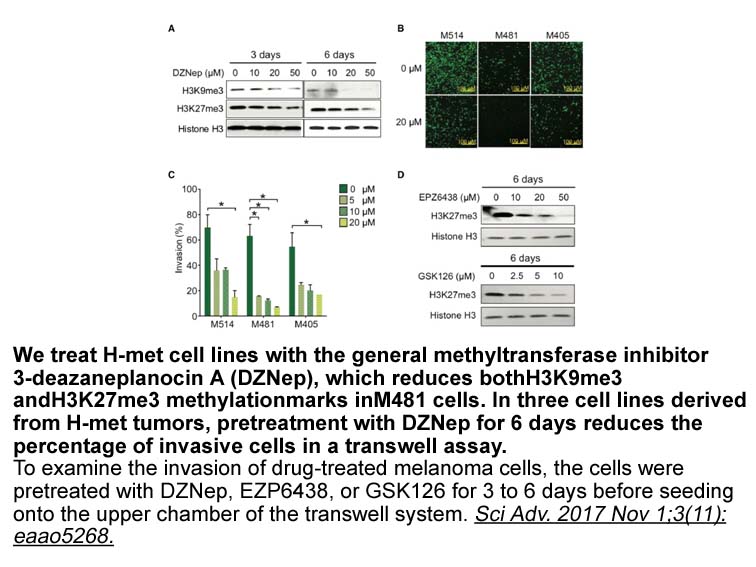
H2R agonists In search for potent and selective H2R agonists, comprehensive structure–activity relationship studies have been conducted and led to the first H2R agonists, e.g. 4(5)-methylhistamine (16) which is actually now used as selective H4R agonist (Fig. 4) (Durant et al., 1975, Lim et al.,
-
br STAR Methods br Acknowledgments Anthony
2021-10-20
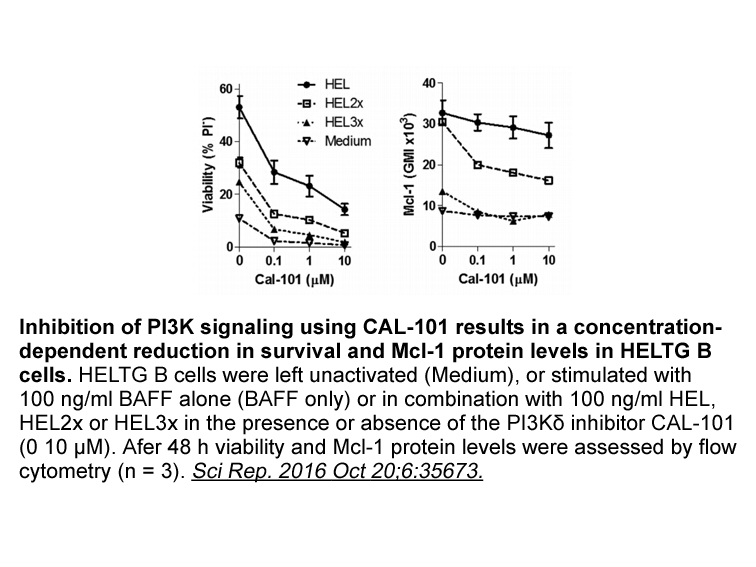
STAR★Methods Acknowledgments Anthony Koleske is thanked for helpful discussions and for providing p190RhoGAP-A cDNA. Anatoly Kiyatkin and Mark Lemmon are thanked for use of the BioTek Synergy 2 plate reader for the MANT assays. Leena Kuruvilla is thanked for assistance with the thermal shift a
-
Fibronectin protein level was not affected by DIF although
2021-10-20
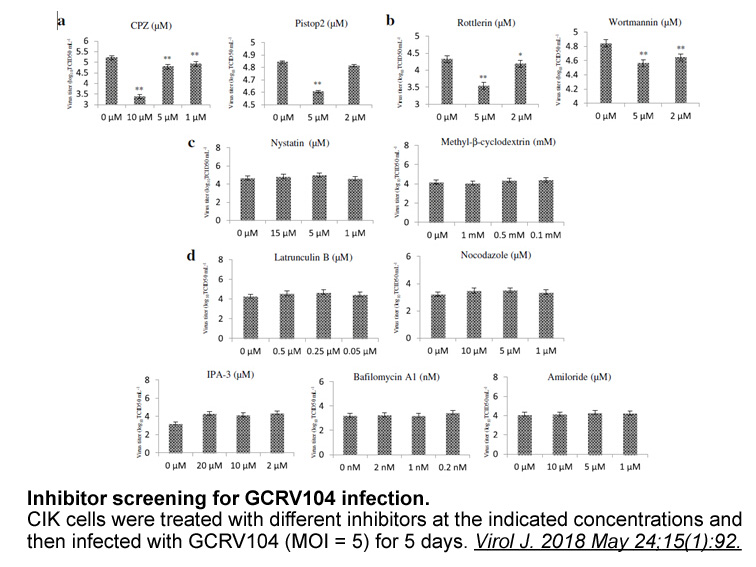
Fibronectin protein level was not affected by DIF-1, although fibronectin has also been considered a canonical Wnt signaling pathway target gene product [39]. Thus, the canonical Wnt signaling pathway may not be critical for the regulation of the expression of fibronectin in malignant melanoma cells
-
br Potential endogenous agonists of GPR The first endogenous
2021-10-20
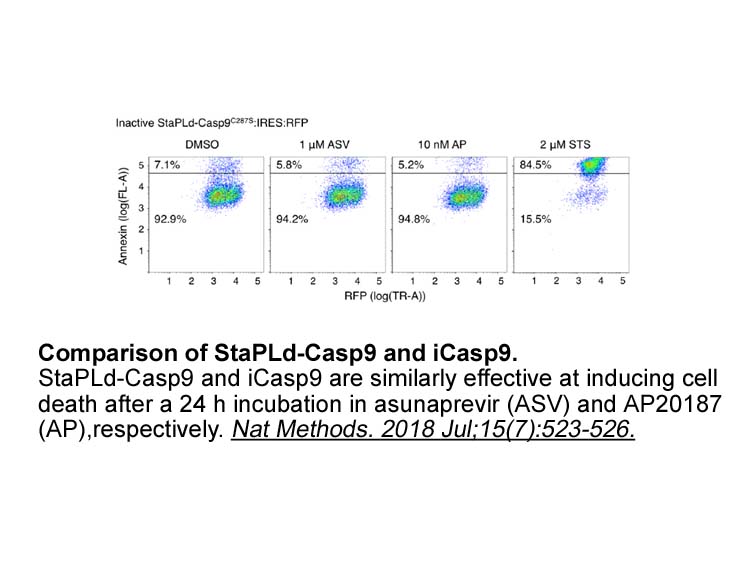
Potential endogenous agonists of GPR35 The first endogenously produced chemical that was shown to be able to activate GPR35 was the tryptophan metabolite kynurenic Phusion high-fidelity DNA polymerase [8]. When human GPR35 was expressed along with a mixture of promiscuous and chimeric G proteins
-
Acknowledgments Financial support from the National Natural
2021-10-20
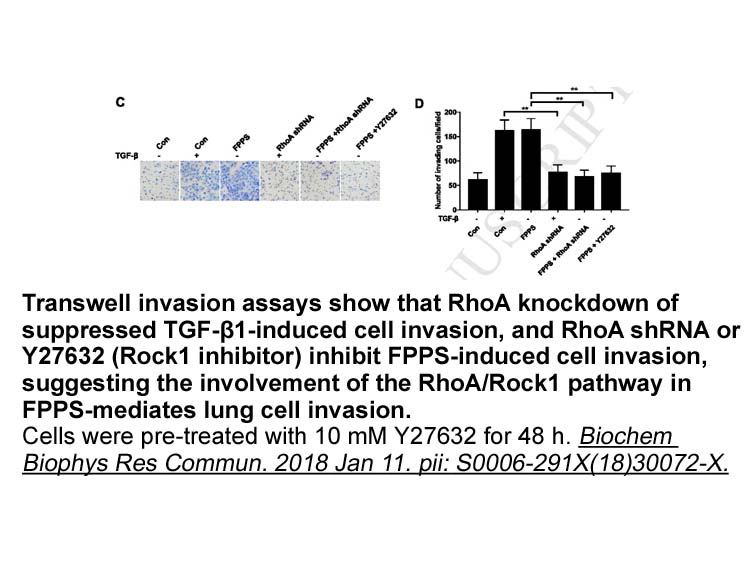
Acknowledgments Financial support from the National Natural Science Foundation of China (81730094, 81473262 and 81573299) is gratefully acknowledged. This project was also supported by the “111 Project” from the Ministry of Education of China, the State Administration of Foreign Expert Affairs of C
-
br Discussion According to the generally
2021-10-19
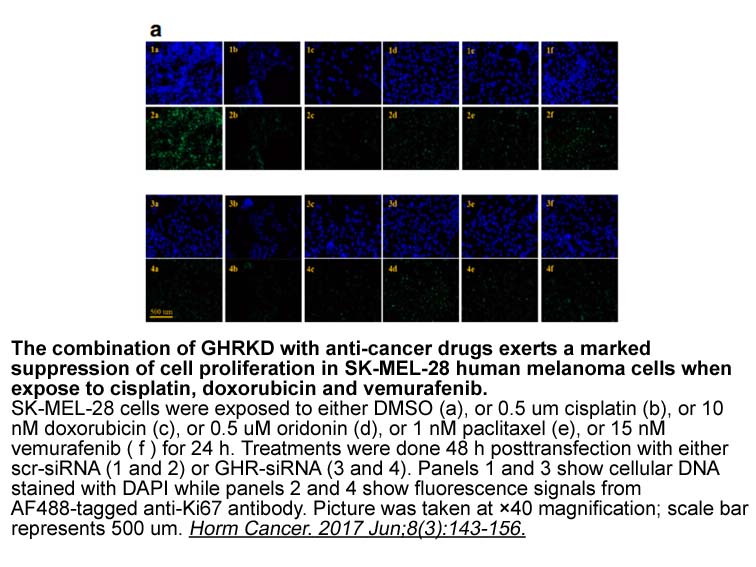
Discussion According to the generally accepted notion which originated from the study of ATP-depleted Retapamulin the changes in Ca2+ homeostasis induced by ATP depletion and leading to the activation of the Gárdos effect are due to the inhibition of Ca2+ pumping, and the subsequent entry of Ca2
-
br Hippo Signaling in Autoimmunity An imbalance of T cell
2021-10-19
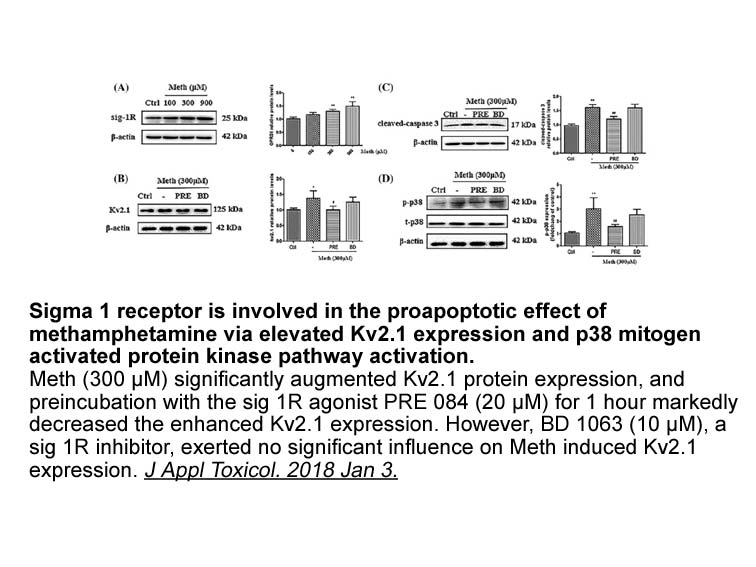
Hippo Signaling in Autoimmunity An imbalance of T cell subsets, such as immunosuppressive regulatory T 5-ht receptor (Treg) and inflammatory TH17, has a key role in autoimmune diseases. Recently, investigations found that TAZ but not YAP enhances TH17 differentiation but attenuates Treg different
-
In humans polymorphisms in the lengths of
2021-10-19
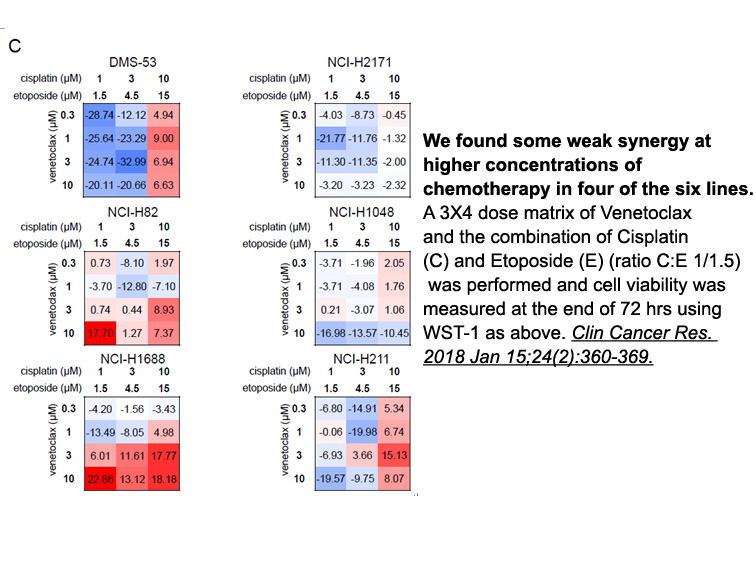
In humans, polymorphisms in the lengths of GT sequences (from 11 to 40) within the HMOX1 promoter impact the magnitude of HO-1 expression profiles. Long GT repeats code for less stable (Z-conformational) DNA with blunted transcriptional activity resulting in lower resting and stimulated HO-1 protein
-
So studies are currently in progress
2021-10-19
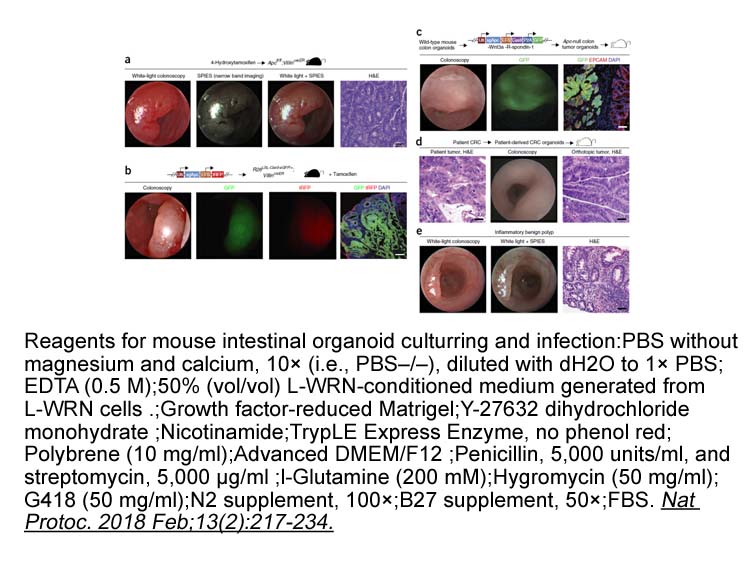
So, studies are currently in progress to design drugs which could inhibit the main crosstalk components between interacting key pathways (Fig. 1). Wnt The Wnt family consists of 19 highly conserved glycoproteins serving as ligands which bind to the G-protein coupled 7-pass transmembrane receptor
-
Introduction Hepatocellular carcinoma HCC is the fifth
2021-10-19
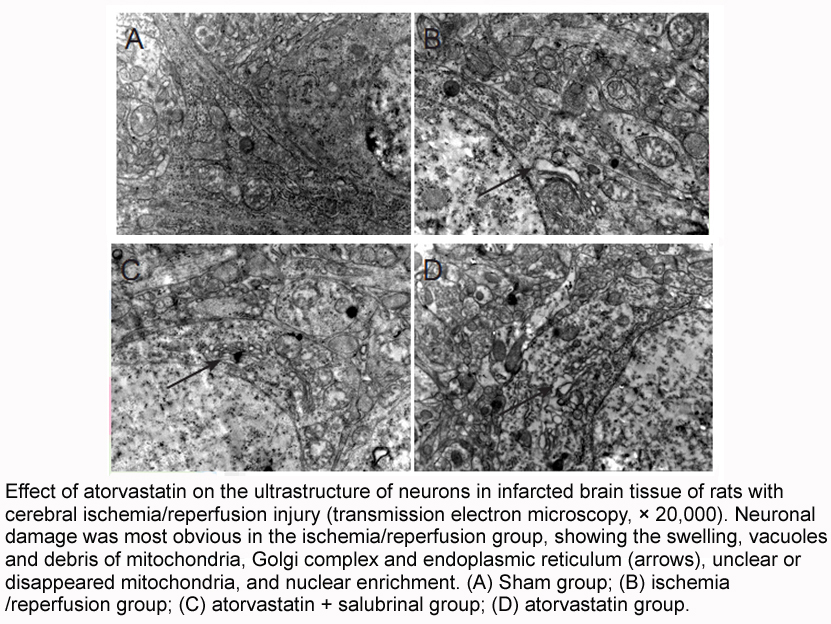
Introduction Hepatocellular carcinoma (HCC) is the fifth most lethal malignant tumor worldwide and is the second leading cause of cancer-related death [1]. For HCC patients, pi3k inhibitors virus (HBV) infection is the important causative risk factor in Asia-Pacific regions [[2], [3], [4]]. In Chin
15358 records 598/1024 page Previous Next First page 上5页 596597598599600 下5页 Last page